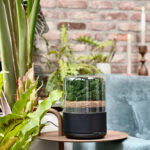Indoor air quality has become a hot topic in recent years. As more people grow conscious of what they breathe inside their homes, interest in alternatives to electric or mechanical air purifiers is on the rise. Enter Natural Air Purifiers a term that now appears in blogs, eco-friendly forums, and wellness circles alike. But do these natural options actually purify your indoor air, or are they just trending with little scientific backing?
This guide dives into the real story behind natural air purifiers—what they are, how they work, their effectiveness, and whether they’re worth your time and money.
What Are Natural Air Purifiers?
Natural air purifiers are methods or materials used to clean indoor air without synthetic chemicals or electronic devices. They rely on nature-based processes to filter out airborne pollutants, odors, and allergens. Common examples include:
-
Houseplants
-
Activated charcoal
-
Himalayan salt lamps
-
Beeswax candles
-
Essential oil diffusers
-
Baking soda
-
Ventilation practices (like opening windows)
While each method claims some benefit, it’s important to break down the science and limitations behind them.
The Air We Breathe Indoors
According to the Environmental Protection Agency (EPA), indoor air can be 2 to 5 times more polluted than outdoor air. Pollutants such as volatile organic compounds (VOCs), mold spores, pet dander, dust mites, and smoke often lurk in our homes undetected. With this in mind, any solution that can naturally remove these contaminants is understandably appealing.
However, air purification is a complex process. Not every “natural” method is equipped to handle all indoor pollutants, especially on a large scale. So how well do these solutions stack up?
Houseplants: More Than Just Decor?
Many believe houseplants are excellent natural air filters—and they’re partly right. NASA’s famous 1989 study concluded that certain plants could remove toxins like benzene and formaldehyde from the air. Popular choices include:
-
Spider Plant
-
Peace Lily
-
Snake Plant
-
English Ivy
-
Aloe Vera
But here’s the catch: the study was conducted in small, sealed chambers—not real-world living rooms. Later studies have shown that you’d need dozens of plants per square meter to see a noticeable difference in air quality. So while houseplants may contribute marginally to cleaner air and definitely improve humidity and mood, they’re not a standalone solution.
Activated Charcoal and Bamboo Charcoal
Activated charcoal is incredibly porous and known for its ability to trap toxins. Charcoal bags made from coconut shells or bamboo are marketed as odor removers and air purifiers. These work through adsorption—pollutants stick to the surface of the charcoal.
Scientific testing has shown that activated charcoal can absorb VOCs and odors, but its effectiveness is limited by surface area and air flow. In smaller spaces like closets, bathrooms, or cars, they can make a difference. But don’t expect a tiny pouch to clean the air in a 500-square-foot room.
Himalayan Salt Lamps: Pretty but Powerful?
Himalayan salt lamps are often praised for emitting negative ions that bind with airborne particles, making them fall to the ground. However, the ion output from these lamps is minimal—nowhere near the levels generated by actual air ionizers.
While they do emit a soft, relaxing glow and may reduce moisture slightly, there’s no scientific evidence showing they significantly purify air. Their biggest benefit might be ambiance rather than air cleaning.
Beeswax Candles: A Cleaner Burn
Beeswax candles are a cleaner alternative to paraffin candles, which can release soot and VOCs. As beeswax burns, it releases negative ions that may help neutralize pollutants. While the scientific proof is still limited, beeswax does produce less indoor pollution than traditional candles, making it a better choice if you enjoy candlelit spaces.
Still, it’s essential to burn them in moderation and ensure your space is well-ventilated.
Essential Oils and Diffusers
Essential oils like tea tree, eucalyptus, and lemon are known for their antibacterial and antiviral properties. When diffused, they can reduce some airborne microbes and improve the scent of a room.
However, essential oils don’t filter out particulate matter or heavy pollutants. Overuse can also trigger allergies or respiratory irritation, especially in sensitive individuals.
Ventilation: Nature’s Oldest Air Purifier
Sometimes the best solution is the simplest one. Proper ventilation—opening windows and using exhaust fans—remains one of the most effective ways to improve indoor air quality. This method doesn’t rely on filters or fancy gadgets; it just lets clean outdoor air in and pushes stale, polluted air out.
Combining ventilation with other natural purifiers can boost their effectiveness dramatically.
Do Natural Methods Replace HEPA Purifiers?
In short—no. While natural methods can support a healthier indoor environment, they rarely match the effectiveness of HEPA-filter air purifiers, which are designed to capture particles as small as 0.3 microns with 99.97% efficiency.
Natural methods are best used as supplementary strategies. For example:
-
Add houseplants to improve humidity and aesthetics
-
Use charcoal bags in small spaces
-
Burn beeswax candles for cleaner ambiance
-
Diffuse essential oils occasionally for mood and scent
-
Keep windows open when weather and air quality permit
Final Verdict: Are Natural Air Purifiers Worth It?
If you’re expecting a houseplant or a salt lamp to single-handedly cleanse your indoor air, you might be disappointed. But when used thoughtfully and in combination, Natural Air Purifiers can play a meaningful role in reducing indoor pollutants and creating a more pleasant living space. They’re affordable, eco-friendly, and chemical-free—and that counts for a lot in today’s health-conscious world. Just remember: no single method is a magic bullet. A layered approach, combining natural purifiers with good ventilation and possibly a mechanical purifier, will give you the best results.

